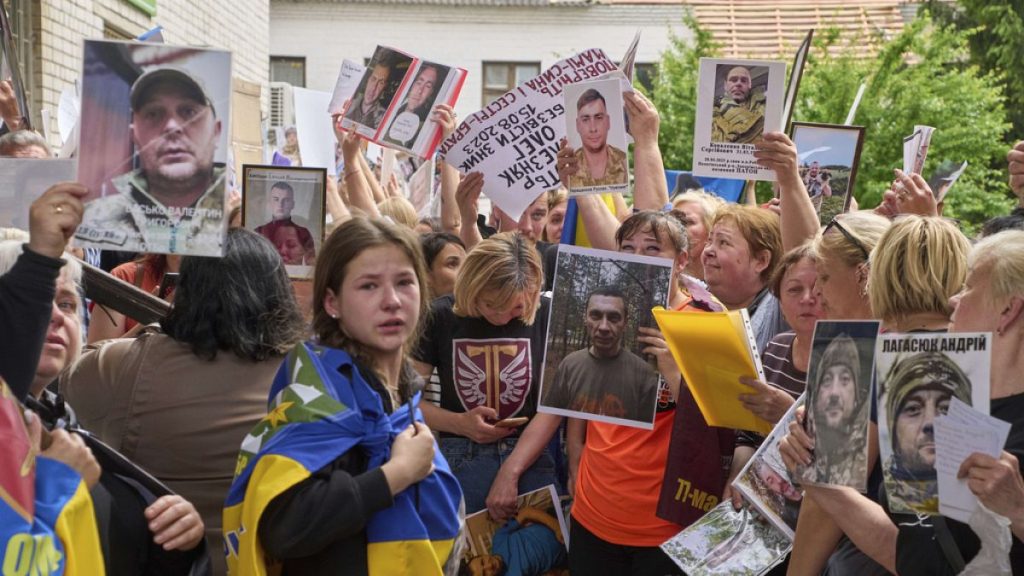In a significant development amid ongoing tensions, Russia and Ukraine executed a large-scale exchange of prisoners over the weekend, facilitating the return of 1,000 individuals from both sides. The three-day operation, marking the largest swap since the conflict’s onset, was confirmed by Ukrainian President Volodymyr Zelenskyy on social media. This event comes at a time of heightened military activity, including a major assault by Russia on Ukrainian territories, leading to numerous casualties.
| Article Subheadings |
|---|
| 1) Overview of the Prisoner Exchange |
| 2) Context of the Recent Talks |
| 3) The Ongoing Military Situation |
| 4) Response from Leaders |
| 5) Implications for Peace Talks |
Overview of the Prisoner Exchange
On May 25, 2025, a substantial prisoner exchange took place between Russia and Ukraine as part of a negotiated accord. This operation, executing a swap of 1,000 prisoners, included a final handover of 303 prisoners recognized as Ukrainian defenders. The exchange began on Friday and culminated on Sunday, setting a precedent as the most significant swap since the conflict ignited three years ago. Ukrainian President Volodymyr Zelenskyy took to social media platform X, celebrating the return of these defenders and reinforcing the ongoing commitment to bringing home every citizen affected by the conflict.
Context of the Recent Talks
The groundwork for this prisoner exchange was laid during peace talks held in Istanbul earlier in the month. These discussions marked the first face-to-face dialogue between representatives of Russia and Ukraine since the war’s beginning, indicating a cautious thaw in relations from what has been a protracted and violent conflict. The prisoner exchange represented the only tangible result emerging from those negotiations, reflecting an urgent desire from both sides to find avenues for peace amidst the bloodshed. The talks aimed to explore various aspects of the conflict while grappling with the humanitarian crises that have arisen as collateral damage in the war.
The Ongoing Military Situation
Notably, the progress toward a prisoner exchange coincided with a dramatic escalation in military activity. Just hours before the final handover of prisoners, Russian forces executed a massive drone and missile assault targeting various locations across Ukraine. This attack has been described as the most significant aerial bombardment since the onset of Russia’s full-scale invasion in February 2022, resulting in at least 12 reported deaths and numerous injuries among civilians. Ukrainian officials characterized this as an unprecedented act of aggression, pleading for international support to address the escalated threat.
Response from Leaders
In light of these developments, President Volodymyr Zelenskyy has called on Western nations to intensify their sanctions against Russia, emphasizing the need for continued pressure on Moscow to cease its military operations. Meanwhile, Russian Foreign Minister Sergei Lavrov conveyed that once the prisoner exchange was finalized, Russia would present Ukraine with a draft peace agreement. This duality in responses indicates the complexities and sensitivities surrounding the renewed efforts toward peacemaking, as leaders grapple with military realities and diplomatic ambitions. President Zelenskyy, in his ongoing communication, reiterated the urgent need for a ceasefire, reflecting the growing despair over the humanitarian impact of the conflict on both sides.
Implications for Peace Talks
The successful execution of the prisoner exchange introduces a nuanced dynamic into ongoing peace discussions. Historically, prisoner swaps have served as a catalyst for further negotiations, providing a foundation of trust, however fragile, between conflicting parties. Although this development is a hopeful sign, the overarching context remains fraught with challenges. The recent military escalations juxtaposed against efforts to broker peace illustrate the complex interplay of dialogue and warfare. The efficacy of forthcoming peace talks will depend heavily on the willingness of both nations to prioritize diplomatic solutions over military ambitions, a difficult proposition given the entrenched positions and the mounting human toll of the conflict.
| No. | Key Points |
|---|---|
| 1 | Russia and Ukraine completed a significant prisoner exchange involving 1,000 individuals. |
| 2 | The exchange was part of recent peace talks held in Istanbul. |
| 3 | Aerial attacks by Russia continue to escalate, compounding the humanitarian crisis. |
| 4 | Leaders are calling for increased sanctions and diplomatic efforts to stabilize the situation. |
| 5 | The implications of the exchange could influence future peace negotiations. |
Summary
The recent prisoner exchange between Russia and Ukraine signals a moment of potential progress in the ongoing conflict, while simultaneous military escalations challenge the possibility of lasting peace. As leaders from both sides navigate through this delicate moment, the international community watches closely, hoping for further diplomatic advancements that can pave the way for a sustainable resolution. However, given the dual realities of negotiation and aggression, the path forward remains laced with uncertainties.
Frequently Asked Questions
Question: What was the significance of the recent prisoner exchange?
The recent prisoner exchange involved the return of 1,000 individuals, marking one of the largest swaps since the war began. It symbolizes a possible step toward dialogue and peace, even amid ongoing military escalations.
Question: What prompted the latest round of talks between Russia and Ukraine?
The talks in Istanbul were initiated to explore potential avenues for peace and included discussions on humanitarian concerns, leading to the recent prisoner exchange.
Question: How has the military situation impacted peace negotiations?
The escalation of military attacks, particularly the large-scale aerial assaults by Russia, complicates peace negotiations, making it difficult for both sides to maintain trust and progress toward a ceasefire.
